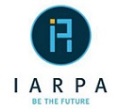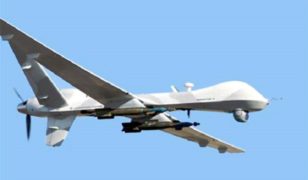IARPA is soliciting proposals for Machine Intelligence from Cortical Networks (MICrONS) research
 Despite significant progress in machine learning over the past few years, today’s state of the art algorithms are brittle and do not generalize well. In contrast, the brain is able to robustly separate and categorize signals in the presence of significant noise and non-linear transformations, and can extrapolate from single examples to entire classes of stimuli. This performance gap between software and wetware persists despite some correspondence between the architecture of the leading machine learning algorithms and their biological counterparts in the brain, presumably because the two still differ significantly in the details of operation.
Despite significant progress in machine learning over the past few years, today’s state of the art algorithms are brittle and do not generalize well. In contrast, the brain is able to robustly separate and categorize signals in the presence of significant noise and non-linear transformations, and can extrapolate from single examples to entire classes of stimuli. This performance gap between software and wetware persists despite some correspondence between the architecture of the leading machine learning algorithms and their biological counterparts in the brain, presumably because the two still differ significantly in the details of operation.
The MICrONS program aims to achieve a quantum leap in machine learning by creating novel machine learning algorithms that use neurally-inspired architectures and mathematical abstractions of the representations, transformations, and learning rules employed by the brain. To guide the construction of these algorithms, performers will conduct targeted neuroscience experiments that interrogate the operation of mesoscale cortical computing circuits, taking advantage of emerging tools for high-resolution structural and functional brain mapping. The program is designed to facilitate iterative refinement of algorithms based on a combination of practical, theoretical, and experimental outcomes: performers will use their experiences with the algorithms’ design and performance to reveal gaps in their understanding of cortical computation, and will collect specific neuroscience data to inform new algorithmic implementations that address these limitations. Ultimately, as performers incorporate these insights into successive versions of the machine learning algorithms, they will devise solutions that can achieve human-like performance on complex information processing tasks with human-like proficiency.
MICrONS is organized in three phases, totaling five years in duration. During each phase, performers conduct targeted neuroanatomical and neurophysiological studies to inform their understanding of the cortical computations underlying sensory information processing and, concurrently, create neurally-derived machine learning algorithms that perform similar functions. Performers motivate their experimental and algorithmic designs by formulating and updating a conceptual model or “theoretical framework” for neural information processing in a given sensory modality. They use computational neural models to establish a correspondence between the computations performed by biological wetware and the computations employed by their machine learning software. Each phase ends with an information processing challenge that assesses how well the new algorithms perform on increasingly challenging machine learning tasks: similarity discrimination in Phase 1, generalization and classification in Phase 2, and invariant recognition in Phase 3. Performers use the results of their experiments in each phase to guide their development of improved algorithms in the subsequent phase (in Phase 1, performers base their algorithms on the existing neuroscience literature).
The MICrONS program comprises three Technical Areas (TAs):
- TA1– experimental design, theoretical neuroscience, computational neural modeling, machine learning, neurophysiological data collection, and data analysis;
- TA2– neuroanatomical data collection; and
- TA3– reconstruction of cortical circuits from neuroanatomical data and development of information technology systems to store, align, and access neural circuit reconstructions with the associated neurophysiological and neuroanatomical data.
Although IARPA anticipates receiving a number of holistic proposals responding to all three TAs, it recognizes that some prospective offerors may have capabilities in only a subset of the overall program scope, and wishes to maximize its opportunity to leverage these capabilities. Therefore, offerors may choose to propose to one, two, or all three TAs. Because achieving MICrONS program goals will require significant collaboration across all three TAs, offerors who propose to only one or two TAs should be prepared to work closely with performers in the remaining TAs.
The full text of the announcement and submission instructions are available on the Federal Business Opportunities website.
Source: IARPA
Tags:
metered







